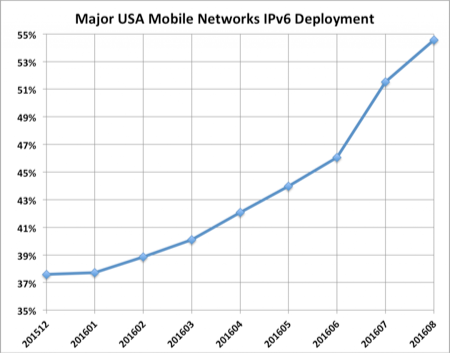 Is your website "mobile-friendly"? Does it display nicely on a mobile device such as an iPhone, iPad, Android or other smart phone? If not, you have until April 21 to make it mobile-friendly... or you will suffer a drop in Google search results!
Is your website "mobile-friendly"? Does it display nicely on a mobile device such as an iPhone, iPad, Android or other smart phone? If not, you have until April 21 to make it mobile-friendly... or you will suffer a drop in Google search results!
In a February 26 post on Google's Webmaster Central Blog, Google very clearly indicated their direction (my emphasis added):
Starting April 21, we will be expanding our use of mobile-friendliness as a ranking signal. This change will affect mobile searches in all languages worldwide and will have a significant impact in our search results. Consequently, users will find it easier to get relevant, high quality search results that are optimized for their devices.
Google does not often clearly state what signals it uses for ranking search results... but here they are.
Get "mobile-friendly" ... or drop in search ranking for mobile searches!
This last point is important - they say the mobile-friendly status will be used as a ranking status for mobile searches. I interpret this to mean that if your site is not mobile-friendly you might still rank highly in searches from regular computers/laptops/desktops, but your ranking would decrease in searches from mobile devices.
However, given how many people are now using mobile devices to access the Internet... and how that trend continues to increase over time... NOT having a mobile-friendly site is going to impact people being able to get to your site.
Tools To Help
To help with the transition to a mobile-friendly web, Google has provided several tools. First, they have a "Mobile-Friendly Test" tool at:
https://www.google.com/webmasters/tools/mobile-friendly/
It will analyze your site and tell you if you are "mobile-friendly" in Google's view (which is presumably what they will use in the ranking signals).
Second, Google has a guide to creating mobile-friendly websites at:
https://developers.google.com/webmasters/mobile-sites/get-started/
A key section here is:
where they explain options you have to make your site mobile-friendly.
Moving To A New Theme
In some cases, such as this Disruptive Conversations site that is still hosted on TypePad, my only choice is to move to a new "theme" that uses "responsive design". I've already done this with danyork.com, but haven't yet done that here (but I will before April 21). This can be a larger process if you want to continue to use your existing style and design.
With other content management systems (CMSs) such as WordPress, Drupal and Joomla, you can also move to mobile-friendly themes as there are many available. When I've been creating new sites on WordPress in the past year or two I've made sure that all the themes I've been using have had "responsive design" as one of their attributes.
Using A Plugin
With some of the CMSs, there may be plugins that can help you make your site mobile-friendly without changing the theme. For instance, with WordPress, there are two that I've used to make sites mobile-friendly:
Both of those plugins essentially provide a responsive-design theme that gets used for your site when a mobile device connects to your site. You may not have all the design capabilities that you would have in having your main theme be responsive (in terms of having the mobile theme look like your main theme), but these plugins provide a quick way to get your site to be "mobile-friendly".
Other CMSs may have similar plugins, modules or extensions - you need to check with your CMS. Google's guide has links to help you get started.
Other Options
If you don't use a CMS or your CMS doesn't offer mobile-friendly themes or plugins... well... you may want to consider moving to a CMS that offers such capabilities (although that can be a huge task). Or you can read up on the principles of "responsive design" and see what you can apply to your website.
Getting To A Mobile-Friendly Web
The end result out of all of this will be a mobile-friendly web... and as all the millions and billions of new users come on to the Internet odds are pretty good that they will be using mobile devices, so the good news is that your content will be readily accessible on all those devices.
The bad news is that you may have some work to do between now and April 21 if you haven't already made your site mobile-friendly. (Well, assuming you care about ranking highly in Google search results - but if you are reading this site you probably do!)
If you've needed a deadline to make this happen... here it is!
Get mobile-friendly by April 21... or watch your Google search ranking drop!
An audio commentary on this topic is available:
Discuss this post:
If you found this post interesting or useful, please consider either:



 Just a quick administrative update about this Deploy360 site. If you are browsing this site using a smartphone such as an iPhone or Android device you will notice that as of yesterday your user experience has been changed to be more “mobile-friendly”. Whether it is a topic such as
Just a quick administrative update about this Deploy360 site. If you are browsing this site using a smartphone such as an iPhone or Android device you will notice that as of yesterday your user experience has been changed to be more “mobile-friendly”. Whether it is a topic such as 